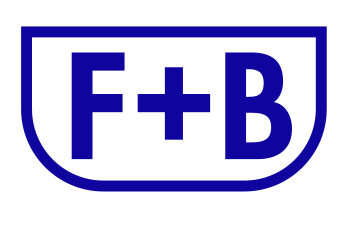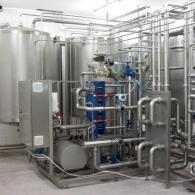Food and beverage manufacturers the world over have a duty of responsibility, and a legal obligation, to ensure that products entering the market are safe for consumption. Underperforming cleaning routines are a known root cause of food safety incidents and when an estimated 75% of cleanings executed on a daily base in the food industry are not properly validated and poorly documented (EHEDG, 2016), many contaminated products could be entering the marketplace.
In addition to frequent verification such as visual checks or swab tests, cleaning in place (CIP) systems and protocols should be routinely validated to operate with confidence in cleaning processes and demonstrate legal compliance.
How to Validate your CIP Systems Effectively?
The objective of cleaning validation is to prove that the processing equipment is consistently cleaned of product, microbial residues, chemicals, soils and allergens, to an acceptable level, to prevent cross-contamination of hazards between products. A comprehensive validation project should follow the Plan, Do, Check, Act methodology.

Plan
Planning is the most important stage in any project. A robust plan will include a Project Charter which defines the goals and objectives of the project and details the activities and risks to achieve them.
Some of the contents which would be found in a validation project charter include:
- Members of the validation team, defined roles and responsibilities and individual level of expertise. Every validation project team should include a hygiene specialist/expert conversant with the chemistry to obtain a consistent cleaning result and what is required by law
- A schedule and planned allocation of time which takes production and shift patterns into account
- A list of appropriate and adequate tools are available for testing and data collection
- Performance criteria, metrics and deliverables
The European Hygienic Engineering and Design Group (EHEDG) guide “Cleaning validation in the Food Industry - General Principles” is an excellent resource to utilize when developing the CIP validation project charter. It describes the aspects to be considered at each of the following stages:
- Pre-requisites
- Equipment qualification
- Hazard evaluation
- Acceptance criteria
- Sampling techniques
- Analytical methods
- Soiling procedure
- Cleaning procedure
- Cleaning validation protocol
- Cleaning validation process
- Cleaning validation report
- Maintaining the validated state
Do
Data is collected according to agreed collection methods, guidelines (including health and safety) and timeframe, as described in the project charter.
Check
Data is collated and compared with historical records and against performance and measurement criteria set in the project charter. Any shortcomings will need to be addressed and retested before the CIP system can be validated.
Act
A documented report should be produced once the CIP system has been successfully validated. Content should include:
- The project charter
- The cleaning validation master plan and/or policy components
- Any corrective actions that were required to meet the required standards
- Cleaning validation protocols and tools used for monitoring, verification, revalidation and validation maintenance
- A commitment to measuring success and re-assess at a future date or within a certain time period
- Recommendations for process improvements and training for employees involved in cleaning and disinfection
Could you use some help validating your CIP systems?
An estimated 75% of cleanings executed on a daily basis in the food industry are not properly validated
Diversey® CIPCheck™ is the baseline for CIP validation available from our Knowledge-based Services portfolio.
Our trained CIP specialists will use a combination of data collection methods to perform a detailed analysis of your utilities, chemicals and operating data and produce a full report on the effectiveness of your washes and highlight any areas for improvements in food safety, environmental impact and OEE (overall equipment effectiveness).
Also available is Diversey® CIPTEC, our remote monitoring solution which measures the volume of soil and cleaning chemical in CIP rinse stages to accurately determine the effectivity of each stage. Utilizing this data along with the conductivity, flow and temperature during the wash, our statistical data analysis methods calculate the optimal regime to eliminate overwashing while maintaining a safety margin at 6 sigma level and validating the effectiveness of the cleaning process.
Some resources on important food safety laws
- USA: cGMP for human food/dietary supplem. 21 CFR Part 110/111 FDA-2011-N-0920-1979 - Current Good Manufacturing Practice, Hazard Analysis, and Risk-Based Preventive Controls for Human Food
- Germany: Law on Food and Feed (LFGB) and subordinated regulations
- Europe: Food Hygiene Package: Regulations (EC) 852/2004 etc
- International / several Nations: Codex Alimentarius (food hygiene, HACCP) CAC/RCP 1-1969
- DIN EN 1672-2 “Food processing machinery – Basic concepts – Part 2: Hygiene requirements” and DIN EN ISO 14159 “Safety of machinery – Hygiene requirements for the design of machinery” to substantiate the European machinery directive
- The Global Food Safety Initiative series of approved schemes such as the BRC, SQF, FSSC 22000 and IFS set out clear requirements for cleaning and disinfection of a food plant. These standards address cleaning as a PRP. Under GFSI it is required to have appropriate standards of housekeeping, cleaning and hygiene and these shall be maintained and validated at all times and throughout all stages.






